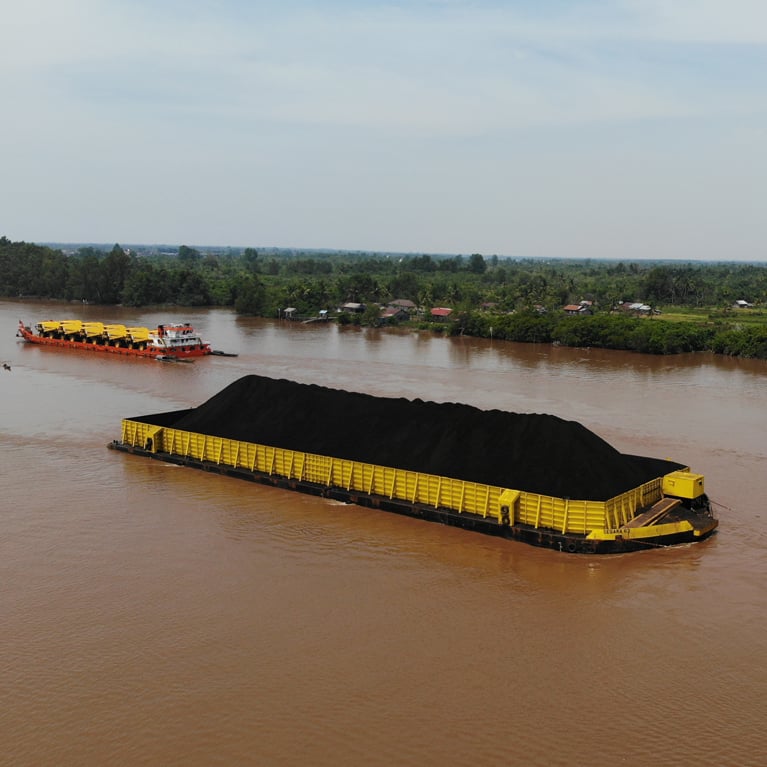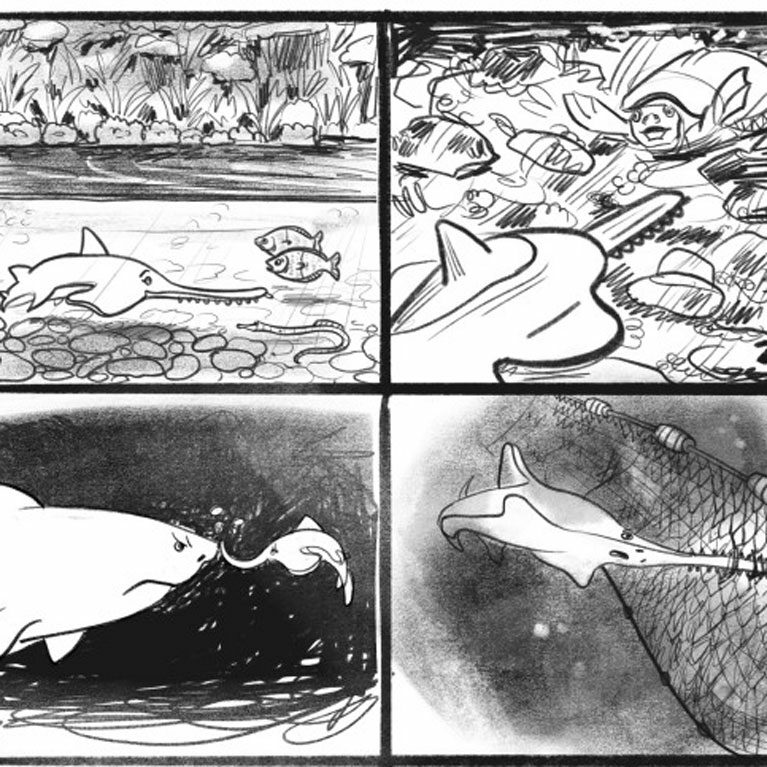Re-writing the sawfish story: Inspiring community driven conservation of sawfishes in Papua New Guinea
Michael is dedicated to the conservation of Papua New Guinea’s sawfishes, and in providing materials for children so that they understand their incredible natural inheritance. His fieldwork entails observing fishing activity at each fishing village as the team travels through remote Papua New Guinea. He wants to harness local knowledge through interviews about sawfishes and their cultural uses, fishing, and how communities value sharks and rays. The idea is to put together a picture of Papua New Guinea’s small-scale fisheries, and document the distribution and population status of some of the world’s most threatened sharks and rays.
My interest in marine biology began as a child when I used to go fishing with my father. We would frequently holiday on the northern New South Wales coast in Australia and spent much of this time looking for the best fishing spots for the highly prized mulloway. Thinking about and identifying environmental factors that made good fishing spots sparked my interest in various aspects of marine biology and large predator ecology. And I became obsessed: bull sharks were easily my favourite species. I was fascinated that they could live in freshwater and marine environments! In high school, this interest...


Re-writing the sawfish story: Inspiring community driven conservation of sawfishes in Papua New Guinea
The project’s main aim is to produce an interactive children’s book on the sawfish of Papua New Guinea that can be distributed to remote schools and communities where sawfish occur. We are also looking to develop a safe-release guide for sawfish that is appropriate for Papua New Guinea and will encourage the live release of sawfish catches that are not required.
Sawfish have disappeared from much of their former range throughout the tropical Indo-Pacific. Populations remain in Papua New Guinea, but recent surveys suggest that they are declining due to sawfish being inadvertently caught in small-scale fisheries targeting more valued teleost fish. There is a need to raise awareness about sawfish and encourage fishing communities to release captured sawfish alive when they are not required for immediate food and economic needs.
All four Indo-Pacific sawfish species occur in Papua New Guinea, which suggests that the nation may be one of the last remaining strongholds for these species. However, recent surveys indicate that their populations are declining. This is primarily because of the small-scale fishers’ preference for using gill nets throughout the coastal and riverine environments of Papua New Guinea. Sawfish were not found to be important for local food or economic requirements, but they may be consumed or sold opportunistically when they are caught incidentally by fishers targeting more valued teleost species. The prominent issue is that mortality is high regardless of what fishers intend to do with them because any sawfish caught are often killed or have their rostrum removed so they can be disentangled from nets. The conservation of sawfish in Papua New Guinea is challenging because different communities have different uses for them and different values with respect to them. This makes it challenging to develop conservation initiatives that are appropriate to a range of cultural contexts. However, outreach to children using a local NGO, the Piku Biodiversity Network, has made communities in the culturally diverse Kikori River aware of the need to conserve the pig-nose turtle. Although access to educational material is very limited in many regions of Papua New Guinea, communities are keen to learn more about the environments they live in so that they are more informed about threats that logging, mining and fishing may present. Our project identifies that education material for resource-limited schools presents a shared value, transcending communities’ disparate attitudes and values toward sawfish. At the same time, a pictorial guide to releasing sawfish safely is intended for older active fishers to encourage them to release alive sawfish they catch but do not want. This project will partner with the Piku Biodiversity Network and, by focusing on multiple generations, we aim to initiate a shift in attitude towards sawfish in Papua New Guinea.
Working closely with the Piku Biodiversity Network, and Dr. Madeline Green and Dr. William White from CSIRO, this project aims to produce an interactive children’s book that will raise awareness of how sawfish are susceptible to population declines as a result of fishing and will educate readers about their ecological role and threatened status. The narrative of this story will follow a typical migration pattern of a largetooth sawfish as it leaves its freshwater juvenile nursery and travels downriver to the coast. Four ‘sawfish fact’ pages will describe the state of sawfish in Papua New Guinea and globally, and will detail aspects of their biology such as morphological features, their diversity and their ecological role. Interactive activity pages will be included, such as mazes, find-a-words and other material designed to reinforce conservation themes in the story. We will also produce a guide to releasing caught sawfish safely that is tailored to fishing methods and vessels used in small-scale fisheries in Papua New Guinea.
RESULTS:
Education and public awareness achievements
This project successfully;
1. Produced an interactive children’s book on sawfish
2. Developed a safe release guide for the local fishery context
3. Successfully disseminated the materials to three communities to ensure positive reception
and cultural appropriateness.
4. Produced a website for free access to all materials developed.
5. Publication of a blog on how the project team are using education and outreach to move
from research to conservation action for PNG’s sawfish.
6. Publication of a peer-reviewed paper in Pacific Conservation Biology
All outputs are accessible through our purpose-built website https://sawfishbook.org/ (where future updates can be shared)
This was a highly rewarding project that offered respite from the usual grind of academic research. All project members found the process of producing these materials to be enjoyable and something they would again be eager to engage in. Personally, for me this project highlighted the value of engaging a team with an interdisciplinary skillset. The graphical design team in particular were critical to the execution of this project, and indeed, did most of the work. Their enthusiasm led to formal inclusion in the authorship of both the book and field note published in the journal Pacific Conservation Biology. Indeed, Sarah’s instrumental input into the writing of the narrative saw her listed as the primary author of the children’s book. This project underlined the need for collaborative cross-cutting approaches to conservation, and that we cannot rely on scientific outputs alone in addressing conservation
issues.
The steps for the project team are now continued production and dissemination of materials in Papua New Guinea. The Piku Biodiversity Network have recently been approached for three years of funding from a UK-based NGO to achieve this.
I was interviewed by Channel 7 Cairns (Australia) about this project: https://twitter.com/7NewsCairns/status/1668548124695224322
James Cook University also provided a media release: https://www.jcu.edu.au/news/releases/2023/june/saving-sarah-the-sawfish
Published papers: Grant M.I., Amepou Y., Chin A., Hill S.J., Maggacis D., Green M. (2023). An anecdotal observation of an amputee sawfish recapture and development of safe release guide for Papua New Guinea gillnet fisheries. Pacific Conservation Biology, https://doi.org/10.1071/PC22048

